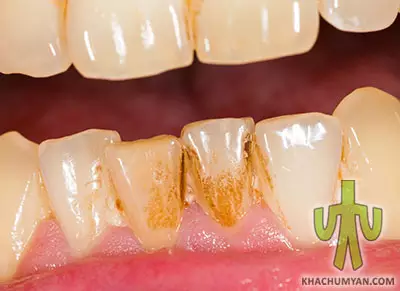 Professional oral hygiene is an integral part of dental treatment. Professional hygiene is the removal of dental plaque and tartar. This procedure is performed by a dentist or dental hygienist. Professional hygiene precedes therapeutic, orthopedic, orthodontic and surgical interventions.
Professional oral hygiene is an integral part of dental treatment. Professional hygiene is the removal of dental plaque and tartar. This procedure is performed by a dentist or dental hygienist. Professional hygiene precedes therapeutic, orthopedic, orthodontic and surgical interventions.
1. Improper or incomplete oral hygiene creates the conditions for the accumulation and spread of plaque.
2. Mineralization takes place under the influence of the oral cavity's microflora and the soft plaque turn into hard tartar.
What can lead to tartar?
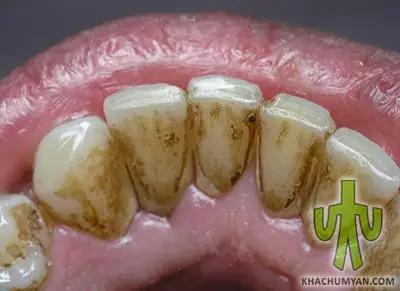 1. According to the location, there are two types of tartar: supragingival and subgingival.
1. According to the location, there are two types of tartar: supragingival and subgingival.
Initially, the supragingival tartar is formed, which erodes the round gingival ligament into subgingival tartar in a very short time.
2. Subgingival tartar grows intensively in the direction of the root, destroying the ligaments that connect the tooth to the dentition. As a result, a gingival pocket is formed - a space between the teeth - gums, which deepens into a bony pocket.
3. Serious disorders occur, causing various diseases. Initially, gingivitis (inflammation of the gums) occurs that eventually develops into periodontitis. As a result, tooth mobility and loss emerge.
To avoid the above-mentioned complications, it is recommended to perform professional oral hygiene twice a year.
Professional oral hygiene
First, the tartar is cleaned, then the colored plaque.
Supragingival and subgingival tartar is cleaned in several ways:
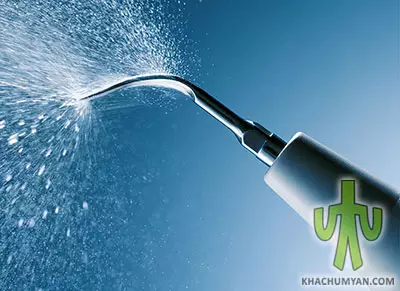 1. The most effective method is removal by ultrasonic. Removal with this system is successful, non-traumatic and it doesn't have an adverse effect on tooth enamel. The ultrasonic system produces ultrasonic fluctuations that easily remove tartar.
1. The most effective method is removal by ultrasonic. Removal with this system is successful, non-traumatic and it doesn't have an adverse effect on tooth enamel. The ultrasonic system produces ultrasonic fluctuations that easily remove tartar.
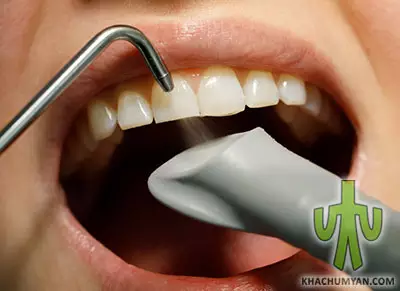 2. After the removal of the tartar, colored plaque is removed. For this purpose, the Air-flow system is used, which, under pressure, uses a special powder to remove soft, colored plaque and give the tooth shine. Tooth color changes by two tones, but this effect is not permanent. If you want even whiter teeth, teeth whitening can be done.
2. After the removal of the tartar, colored plaque is removed. For this purpose, the Air-flow system is used, which, under pressure, uses a special powder to remove soft, colored plaque and give the tooth shine. Tooth color changes by two tones, but this effect is not permanent. If you want even whiter teeth, teeth whitening can be done.
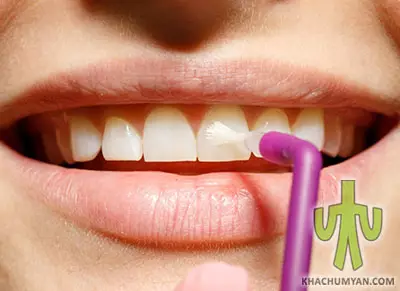 3. After removing tartar and plaque, the doctor covers the teeth with fluoride gel or varnish so that the teeth are not hypersensitive.
3. After removing tartar and plaque, the doctor covers the teeth with fluoride gel or varnish so that the teeth are not hypersensitive.



